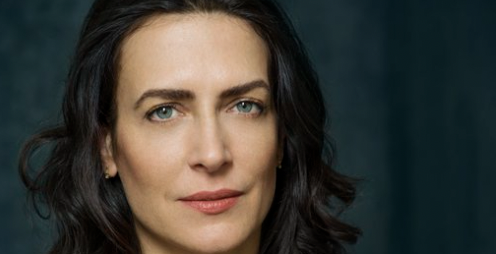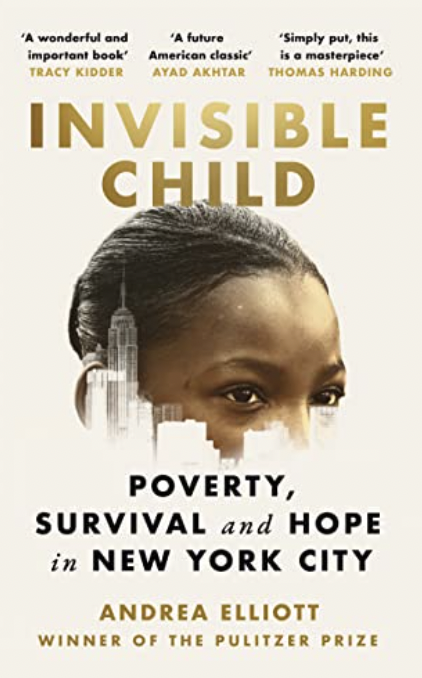
Power of resilience: Child Poverty


Pulitzer Prize-winning journalist Andrea Elliot of The New York Times investigates eight dramatic years in the life of Dasani Coates, a child with mega imagination as the skyscrapers, near Brooklyn homeless shelter. Dasani’s ancestors from slavery to the Great Migration north, grows up, moving with her tight-knit family shelter to shelter, is named for the bottled water that comes to symbolize Brooklyn’s gentrification and the shared aspirations of a divided city.
By 2012, there were 22, 000 homeless children in New York City, whose homeless crisis is exploding as the chasm deepens between rich and poor. The rich get richer by the day while the poor get poorer.
In the shadows of this Gilded Age, Dasani must lead her seven siblings through a thicket of problems: hunger, parental drug addiction, violence, housing instability, segregated schools, and the constant monitoring of the child-protection system. Brooklyn is a borough of New York City, coextensive with Kings County, in the U.S. state of New York with 2.7m residents.
At thirteen, Dasani enrolls at a boarding school in Pennsylvania, her loyalties are tested like never before and she learns to “code switch” between the culture she left behind and the norms of the new town, Dasani starts to feel like a stranger in both places. She is obviously faced with an impossible question: What if leaving poverty means abandoning the family you love?
Invisible Child is heartbreaking, revelatory, provocative, inspiring, and tells an astonishing story about the power of resilience, the importance of family, and the cost of inequality, and reveals critical issues in contemporary America through the life of one remarkable girl.
The family of 10 inhabited in a single cockroach, mouse, and mould-infested often unheated room, a hairdryer balanced on a milk crate warmed the baby’s crib. The communal bathrooms were not safe, so if anyone needed the loo at night they used a bucket in the corner of the room. Even in bright daylight predators roamed the building hallways, so women posted their children as lookouts while they took showers.
Although security guards and metal detectors offered some protection, drugs, weapons and uninvited guests made it inside the shelter via the fire escape.
Dasani wakes up each morning and empties the bucket, cleaning her small area of the room and then running downstairs to the communal cafeteria to heat baby’s formula milk before the crowds arrived, as there are only two microwaves severing more than 100 families, and knife fights often broke out.
Dasani is her mother’s firstborn, the eldest sibling who looks out for and after the others and, as we eventually discover, in many ways the glue that knits the family together.
Elliot published a five-part serial story on the New York Times front page, in December 2013, about the city’s least visible residents, which prompted Bill de Blasio, then mayor-elect, to lambast the city’s neglect of its homeless community. promising to get to work on this right away. Dasani became a celebrity overnight, recognized in the streets crowned “ homeless kid of the year” by her schoolmates. A month later, in January 2014, she was a guest at the Mayor’s inauguration, on stage alongside the Clintons.
Elliot shadowed the Dasani family for eight years from 2012 through to the early months of the pandemic during which time they shuttled back and forth across New York’s five boroughs and beyond, from one shelter to another, as the children eventually cruelly split between foster homes.
Elliot’ subjects, Supreme who hasn’t been given the public assistance money or the family’s food stamps that are still in his wife’s name, ends up in police custody after a bungled robbery, Chanel is living on the streets, having been barred from the family home due to neglecting her children.
Through the eyes of Dasani, who has been let down by the system, Invisible Child elucidates the consequences of systematic racism and of the legacy of poverty that has been passed down from generation to generation. Those who try to help including the teachers, caseworkers, even lawyers are up against a broken system.
Supreme said of his childhood, “All I remember is Violence and being hungry beget neglect and poverty and how to steal food to eat- and that drug and alcohol addiction, gang involvement and incarceration are something of a terrible inevitability.
Invisible Child Poverty: Survival and Hope in New York City by Andrea Elliot, Hutchinson Heinemann £16.99, 624 pages.
